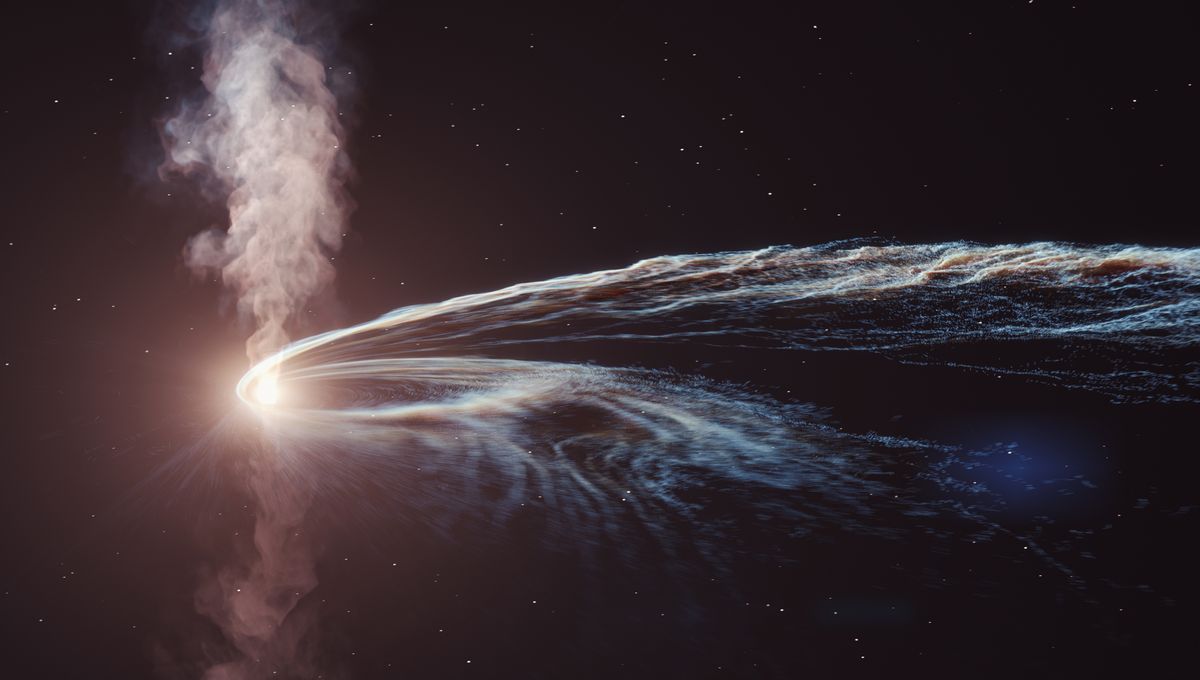
When stars get too close to supermassive black holes, they are ripped to shreds. This is known as a tidal disruption event (TDE). The spewing out of material follows the destruction of the star. The intense gravity pulls the star apart and the material swirls around the black hole, lighting up, which we can observe. But in the case of AT2018hyz, something incredible and not seen before happened. The star was ripped apart and material spewed. And then three years later the black hole threw material out again.
“This caught us completely by surprise — no one has ever seen anything like this before,” lead author of a new paper, Yvette Cendes from the Center for Astrophysics | Harvard & Smithsonian, said in a statement.
When first observed in 2018, AT2018hyz was considered unremarkable. The emission was consistent with a small star, one-tenth the mass of our Sun, being ripped apart by the black hole. But while looking for other TDEs, the team saw this object flare up again and in an extraordinary way.
The material shot out by the black hole was accelerated to about 50 percent of the speed of light. That’s five times faster than most TDE outflows achieve. Whatever is going on in this system is certainly peculiar.
“We have been studying TDEs with radio telescopes for more than a decade, and we sometimes find they shine in radio waves as they spew out material while the star is first being consumed by the black hole,” said Edo Berger, professor of astronomy at Harvard University and the CfA, and co-author on the new study.
“But in AT2018hyz there was radio silence for the first three years, and now it’s dramatically lit up to become one of the most radio luminous TDEs ever observed.”
The discovery of such an event poses intriguing questions about the behavior of supermassive black holes. Astronomers have known that these cosmic giants are messy eaters, but it seems like their feeding habits remain mysterious.
“This is the first time that we have witnessed such a long delay between the feeding and the outflow,” Berger said. “The next step is to explore whether this actually happens more regularly and we have simply not been looking at TDEs late enough in their evolution.”
The study is published in The Astrophysical Journal.
Source Link: Never-Before-Seen Eruption Sees Black Hole Burp Material Years After It Ate Star